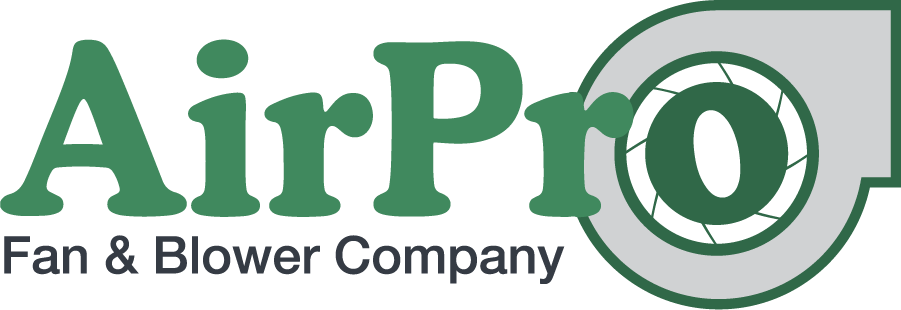This wood product manufacturing application required a belt-driven backward-curved replacement fan matching the dimensions of the existing fan for drop-in-place. The specification called for sandblast preparation with epoxy coating, Teflon coating to give the impeller a non-stick surface, an inlet box, and inlet/outlet expansion joints.
Author: AirPro
Backward-Curved Fan in Long-Term Storage
We built this fan for our customer’s rotary dryer application. Featuring our rugged backward curved technology with a reinforced housing and base, this fan will operate for decades if properly maintained.
A mere two (2) days after receipt of an emergency rush order, we shipped fan replacement parts including a fan wheel and shaft, bearings, belts, sheaves and bushings, and an inlet cone. This isn’t our average case study, and it was not our average order, but unfortunately, the challenge of fan failure due to poor bearing maintenance is not uncommon.
This straightforward scrap removal application called for a high-efficiency backward curved fan with a premium efficiency motor using an Arrangement 1 V-belt drive and a unitary base.
This dust collector application called for a highly-customized high-pressure blower. The specification included a custom housing and an impeller design for a range of static, dynamic, and thermal loads of operation.
This spray dryer exhaust fan is the third in a set of three we provided for this dairy operation, along with the spray dryer supply fan and a cooling conveying fan. Dairy operations use multi-stage spray dryers to ensure optimal product quality and drying efficiency. The exhaust fan pulls the air and particulate out of the dryer, with airflow components designed to prevent particles from sticking to the fan.
For this protein rendering installation, we provided a high-volume single-width backward inclined industrial fan with 304 stainless steel airstream parts, an Arrangement 9 belt drive, and Occupational Safety and Health Administration (OSHA) safety guards. This backward inclined fan moves high volumes of air and includes a non-overloading horsepower design for low-pressure applications like this one.
We designed this custom backward-curved tempering air blower on a skid with a 75 HP IEEE 841 (Institute of Electrical and Electronics Engineers) severe duty motor.
The custom, induced draft fan we designed for a wood industry dust collector application uses a radial tipped blade profile with a custom base design. It includes an outlet damper for flow control, pie-split housing for easier maintenance access, and a 100HP V-drive motor. The heavy-duty fan resists particle build-up and delivers high efficiency in this high-volume application.
Know the Speed/Power/Torque Trade-Off for Your Application
Did you know that when you control and vary the operating speed of your industrial centrifugal fan or blower using a variable frequency drive (VFD), you’re affecting both horsepower (HP) and torque? It’s not always obvious, but it’s important to understand when you may be operating at reduced power or torque due to changes in speed because you always need a certain horsepower to drive the fan and move air through the type of pressure in your system.
Solutions, Reliability, & Support
If you use fans and blowers to process or produce goods, why should you trust AirPro as your partner? Here at AirPro, we prioritize our energy and resources into making high quality fans and providing the service & support you need to successfully run your operations.
How to Identify and Solve Fan Vibration Problems
You may enjoy good vibrations at the beach, but fan vibration issues are no picnic. Even when they ship from the shop having been balanced like ours do, once they’re in the field, vibration problems can surface.
5 Steps to Find and Fix Industrial Fan Performance Problems
Troubleshooting and addressing fan performance issues can feel overwhelming, but with the five steps outlined below and the help of a trusted application engineer either remotely or on-site, you can find the solutions you need for your operations.
